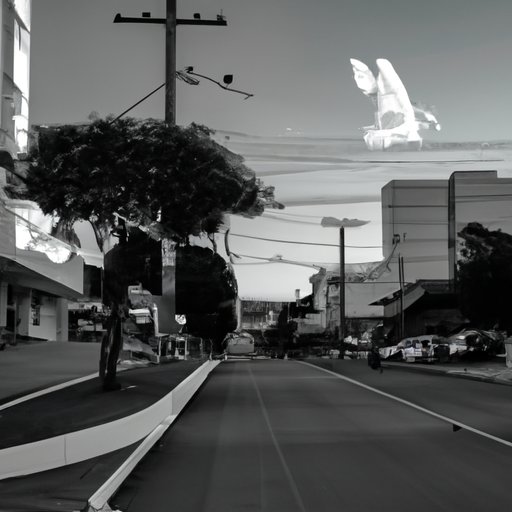Introduction
Street photography is a form of photography that captures everyday life in public places. It often involves taking pictures of strangers without their explicit consent or knowledge. While street photography is a popular and creative pursuit, there are a number of legal issues to consider when taking photos in public. This article will explore the legalities of street photography, enabling photographers to better understand their rights and responsibilities.

Exploring the Legalities of Street Photography
When it comes to street photography, there are some clear rights and wrongs. In general, it is perfectly legal to take photographs in public places, as long as you are not infringing on someone else’s privacy or breaking any other laws. However, it is important to be aware of the laws surrounding street photography, as well as the rights of those being photographed.
Understanding the Laws Surrounding Street Photography
The laws governing street photography vary from country to country, so it’s important to research the laws of the place you’re visiting before you start snapping away. Generally speaking, though, most countries have laws that protect a person’s right to privacy. This means that you should never take photographs of people without their knowledge or consent. Additionally, keep in mind that certain activities, such as photographing military installations or government buildings, may be prohibited in some places.

How to Respect the Rights of Others While Practicing Street Photography
When out on the streets, it’s important to respect the rights of those around you. If you’re photographing people, always ask for their permission first. Avoid taking photographs of children or vulnerable adults without the express permission of a parent or guardian. Also, try to be mindful of situations where someone may feel uncomfortable with being photographed, such as funerals or medical procedures. Finally, if someone asks you to stop taking their photo, then comply with their request.
What’s Allowed and What’s Not?
Recognizing private property and public spaces is key to understanding what is and isn’t allowed when it comes to street photography. Private property includes any space that is owned by an individual or organization, such as homes, businesses, and parks. Taking photos on private property is usually only allowed with the permission of the owner. Public spaces, meanwhile, are open to the public, such as sidewalks, roads, and public parks. Taking photos in these areas is generally allowed, but it’s still important to be aware of local laws.
Establishing What is Considered “Fair Use”
In addition to the laws surrounding street photography, photographers should also be aware of the concept of “fair use.” Fair use is a legal doctrine that allows limited use of copyrighted material without obtaining permission from the copyright owner. When it comes to street photography, this means that photographers can take photos of copyrighted material (such as artwork or signs) as long as it is used for personal or educational purposes, or for criticism or commentary. However, it is important to note that commercial use of copyrighted material is typically not allowed under fair use.
Street Photographers: What You Need to Know About the Law
For street photographers, there are a few key legal issues to be aware of. First, it’s important to obtain permission from subjects before taking their photograph. Second, familiarize yourself with copyright law, and understand the difference between fair use and commercial use. Third, be aware of the laws in different locations, as they can vary significantly. Finally, try to be respectful of the rights of those around you, and avoid taking photos of people without their consent.

A Comprehensive Guide to Street Photography Legality
If you want to stay informed about the legalities of street photography, there are a few resources available. Start by researching the laws of the area you’re visiting. Look into relevant case law to gain a better understanding of how the courts have interpreted the law in similar cases. Additionally, look for comprehensive guides to street photography legality, which can provide an overview of the key legal issues to consider.
Conclusion
Street photography can be a rewarding and creative pursuit, but it’s important to understand the legal issues involved. It’s essential to recognize private property and public spaces, as well as to familiarize yourself with the laws of the area you’re visiting. Be mindful of the rights of those around you, and always obtain permission from subjects before taking their photograph. By understanding the legalities of street photography, photographers can better ensure that their work is both creative and compliant with the law.
(Note: Is this article not meeting your expectations? Do you have knowledge or insights to share? Unlock new opportunities and expand your reach by joining our authors team. Click Registration to join us and share your expertise with our readers.)
